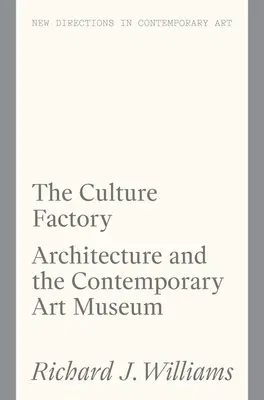Richard J Williams
(Author)The Culture Factory: Architecture and the Contemporary Art MuseumPaperback, 14 January 2022

Qty
1
Turbo
Ships in 2 - 3 days
Only 1 left
Free Delivery
Cash on Delivery
15 Days
Free Returns
Secure Checkout

Part of Series
New Directions in Contemporary Art
Print Length
144 pages
Language
English
Publisher
Lund Humphries Publishers Ltd
Date Published
14 Jan 2022
ISBN-10
1848223978
ISBN-13
9781848223974
Description
Product Details
Author:
Book Format:
Paperback
Country of Origin:
US
Date Published:
14 January 2022
Dimensions:
19.81 x
13.21 x
1.27 cm
ISBN-10:
1848223978
ISBN-13:
9781848223974
Language:
English
Pages:
144
Publisher:
Weight:
181.44 gm